As we know, Australia’s rental vacancy rate has collapsed to an all-time low amid record immigration-driven population growth and falling housing construction.
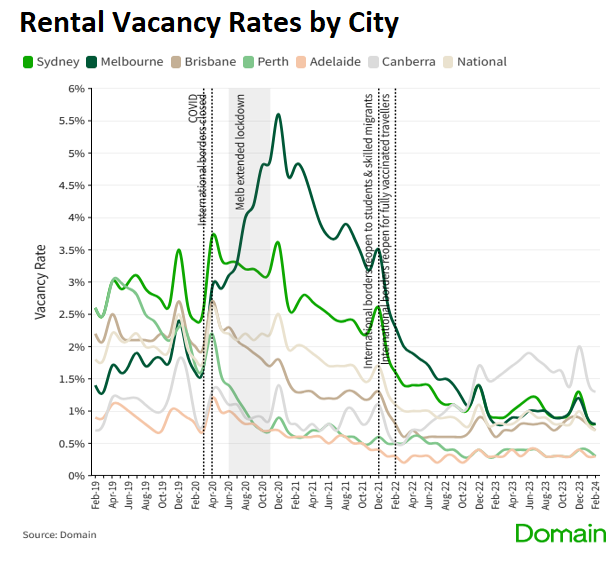
New data from PropTrack shows that rental listings have collapsed across the nation.
In March 2024, the number of newly advertised properties for rent was 13.7% lower than a year earlier and new rental listings were the lowest they’ve been for the month of March since 2010:
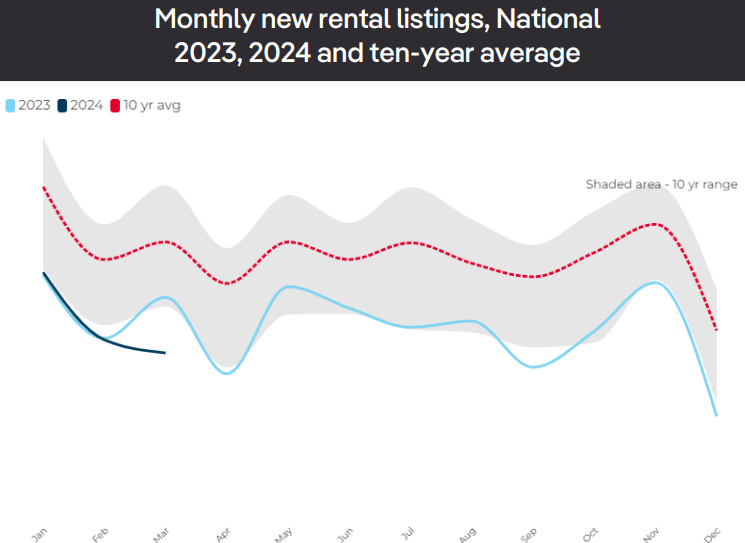
Source: PropTrack
New rental listings across the combined capital cities and combined regional markets were each 13.7% lower in March 2024 compared to a year earlier.
Compared to the March decade average to 2022, capital city new rental listings were 23.2% lower and combined regional market new rental listings were 26.1% lower.
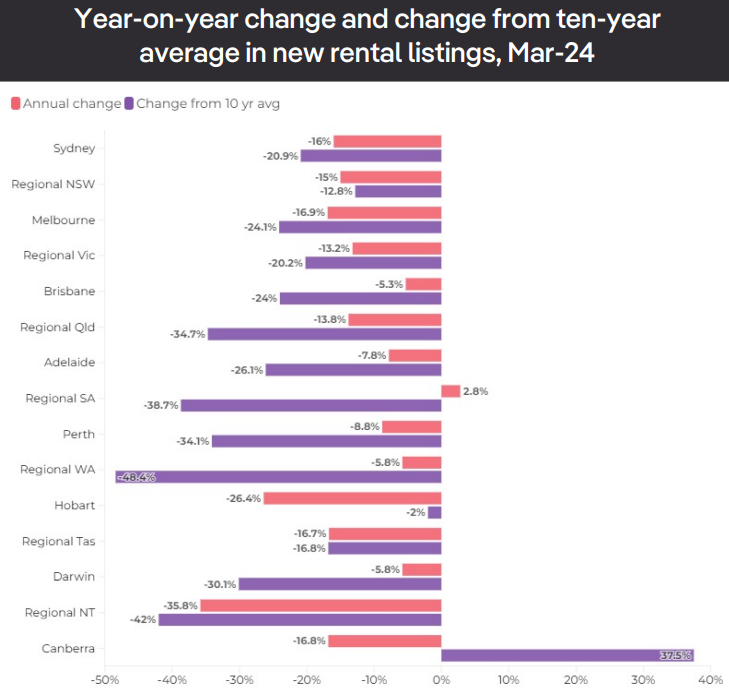
Source: PropTrack
Total rental listings were also down 11.3% from March 2023, with the fewest total rental listings for the month of March since 2010:

Source: PropTrack
The combined capital cities have seen a 10.7% decline in total rental listings over the year to March 2024, sitting 34.2% lower than the March average over the decade to 2022.
Regional markets have seen a larger annual decline in total rental listings of 12.7% and relative to the March decade, average total listings are 38.5% lower.
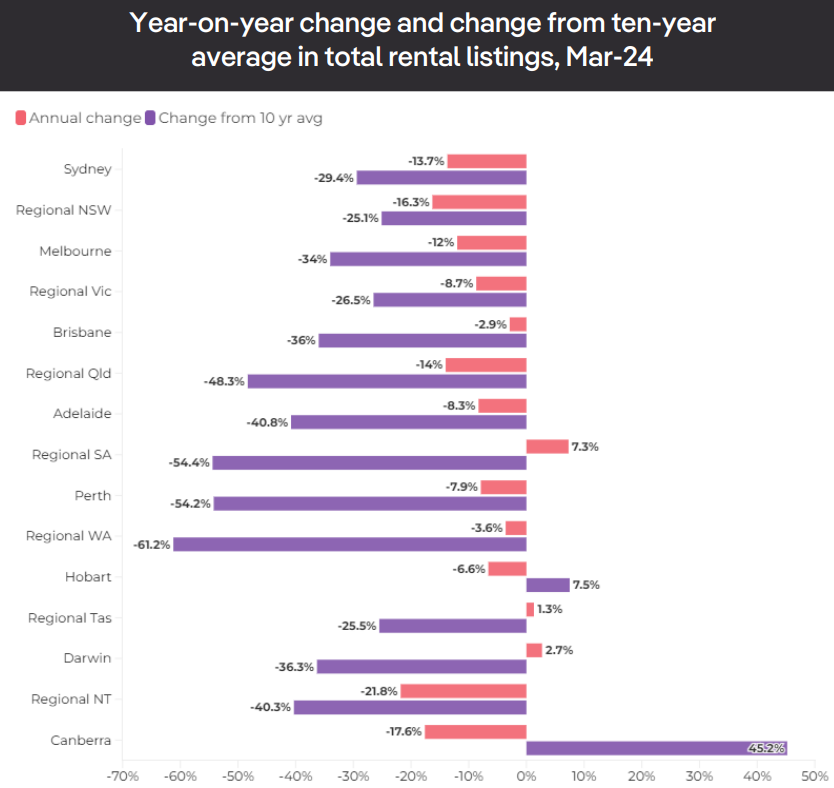
Source: PropTrack
Properties advertised for rent on realestate.com.au are also leasing quickly.
The median days on site in March 2024 were recorded at 18 days. This was unchanged from March 2023, but was lower than the March average of 23 days over the five years to 2022:

Source: PropTrack
Not surprisingly, PropTrack also recorded a collapse in vacancy rates to record lows across the combined capital cities:
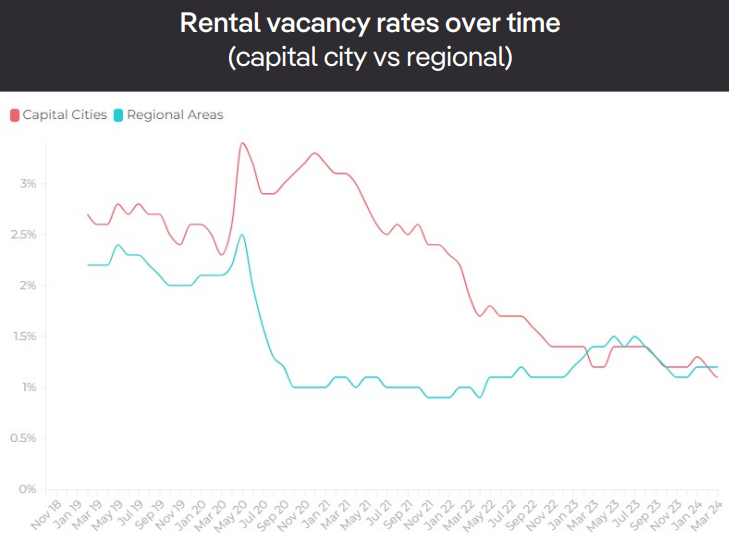
Source: PropTrack
The national rental vacancy rate was recorded at 1.1% in March 2024, down from 1.2% in the previous quarter and lower than the 1.3% from March 2023.
Houses continued to record a much lower rental vacancy rate (0.9%) than units (1.6%) in March 2024. House vacancy rates were down over the quarter and year, from 1% in December and March 2023. Unit vacancy rates also decreased from 1.9% in December 2023 and from 1.8% in March 2023.
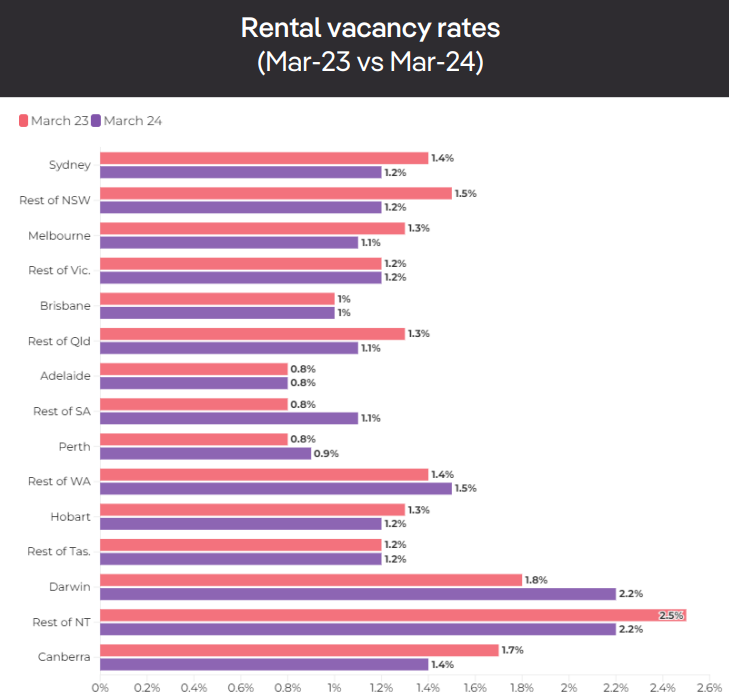
Source: PropTrack
PropTrack notes that prior to the pandemic era, the national rental vacancy rate was typically around 2.5%. This indicates just how much conditions have tightened.
“With limited new rental supply and persistent strong demand for rentals, the vacancy rate is anticipated to remain low. This highlights again how a significant lift in rental stock or reduction in rental demand is required to see more stable rental conditions similar to pre-pandemic”.
Meanwhile, asking rents have soared since the pandemic:
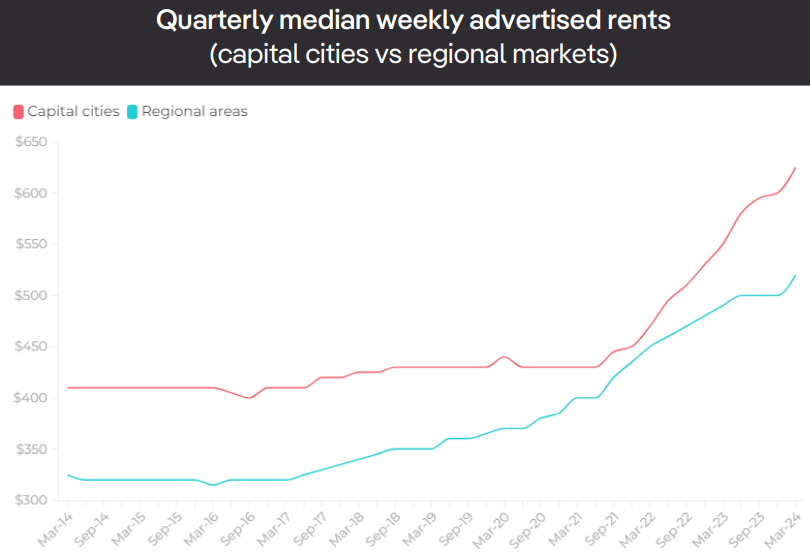
Source: PropTrack
Looking ahead, PropTrack sees no end in sight to Australia’s rental crisis:
“Australia’s population is growing at a rapid pace, creating more competition for rental stock and exacerbating shortages”.
“Over the 12 months to September 2023, the national population increased by a record 659,795 people. Of this increase, 548,770 were from net overseas migration of which most are unlikely to own their own property and therefore rely on rental accommodation”.
“The sustained growth in advertised rents is indicative of excess demand for rental properties and insufficient supply, illuminating the desperate need for more rental properties and housing overall”.
“Under the Federal Government’s Housing Accord, the goal is to build 1.2 million new, well located properties over the five financial years to June 2029”.
“With dwelling approvals and commencements at decade-lows, interest rates at decade highs and construction insolvencies elevated along with material and labour costs, this goal seems increasingly unachievable”.
“Any significant imminent relief to the rental market challenges seems unlikely, with demand expected to remain elevated and supply to remain low leading to higher rents”.
Basically, so long as the federal government runs immigration at a level beyond the nation’s ability to build new homes and infrastructure, Australia’s rental crisis will continue to worsen.

